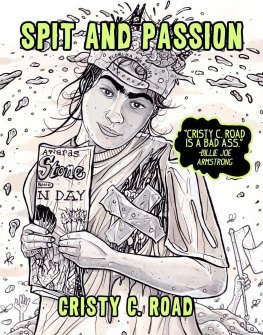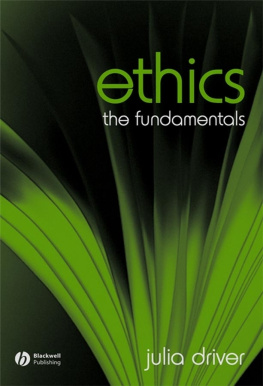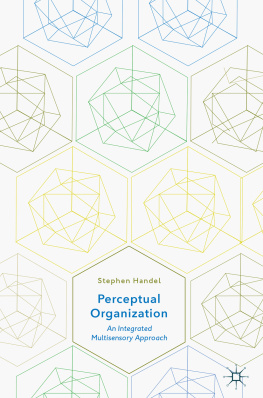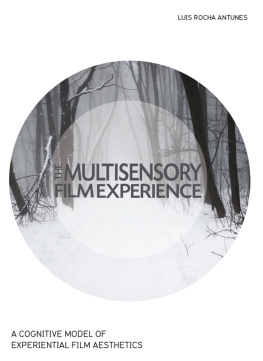Cristy Ho - The Multisensory Driver
Here you can read online Cristy Ho - The Multisensory Driver full text of the book (entire story) in english for free. Download pdf and epub, get meaning, cover and reviews about this ebook. year: 2008, publisher: Ashgate Publishing Limited, genre: Home and family. Description of the work, (preface) as well as reviews are available. Best literature library LitArk.com created for fans of good reading and offers a wide selection of genres:
Romance novel
Science fiction
Adventure
Detective
Science
History
Home and family
Prose
Art
Politics
Computer
Non-fiction
Religion
Business
Children
Humor
Choose a favorite category and find really read worthwhile books. Enjoy immersion in the world of imagination, feel the emotions of the characters or learn something new for yourself, make an fascinating discovery.

- Book:The Multisensory Driver
- Author:
- Publisher:Ashgate Publishing Limited
- Genre:
- Year:2008
- Rating:4 / 5
- Favourites:Add to favourites
- Your mark:
- 80
- 1
- 2
- 3
- 4
- 5
The Multisensory Driver: summary, description and annotation
We offer to read an annotation, description, summary or preface (depends on what the author of the book "The Multisensory Driver" wrote himself). If you haven't found the necessary information about the book — write in the comments, we will try to find it.
The Multisensory Driver — read online for free the complete book (whole text) full work
Below is the text of the book, divided by pages. System saving the place of the last page read, allows you to conveniently read the book "The Multisensory Driver" online for free, without having to search again every time where you left off. Put a bookmark, and you can go to the page where you finished reading at any time.
Font size:
Interval:
Bookmark:
THE MULTISENSORY DRIVER
Human Factors in Road and Rail Transport
Series Editors
Dr Lisa Dorn
Director of the Driving Research Group, Department of Human Factors, Cranfield University
Dr Gerald Matthews
Professor of Psychology at the University of Cincinnati
Dr Ian Glendon
Associate Professor of Psychology at Griffith University, Queensland, and is president of the Division of Traffic and Transportation Psychology of the International Association of Applied Psychology
Todays society must confront major land transport problems. The human and financial costs of vehicle accidents are increasing, with road traffic accidents predicted to become the third largest cause of death and injury across the world by 2020. Several social trends pose threats to safety, including increasing car ownership and traffic congestion, the increased complexity of the human-vehicle interface, the ageing of populations in the developed world, and a possible influx of young vehicle operators in the developing world.
Ashgates Human Factors in Road and Rail Transport series aims to make a timely contribution to these issues by focusing on the driver as a contributing causal agent in road and rail accidents. The series seeks to reflect the increasing demand for safe, efficient and economical land-based transport by reporting on the state-of-theart science that may be applied to reduce vehicle collisions, improve the usability of vehicles and enhance the operators wellbeing and satisfaction. It will do so by disseminating new theoretical and empirical research from specialists in the behavioural and allied disciplines, including traffic psychology, human factors and ergonomics.
The series captures topics such as driver behaviour, driver training, in-vehicle technology, driver health and driver assessment. Specially commissioned works from internationally recognised experts in the field will provide authoritative accounts of the leading approaches to this significant real-world problem.
Implications for Ergonomic Car Interface Design
CRISTY HO
Daiwa Scholar, The Daiwa Anglo-Japanese Foundation, UK
&
CHARLES SPENCE
Professor of Experimental Psychology, Head of the Crossmodal Research Laboratory, Oxford University, UK
ASHGATE
Cristy Ho and Charles Spence, 2008
All rights reserved. No part of this publication may be reproduced, stored in a retrieval system or transmitted in any form or by any means, electronic, mechanical, photocopying, recording or otherwise without the prior permission of the publisher.
Cristy Ho and Charles Spence have asserted their moral right under the Copyright, Designs and Patents Act, 1988, to be identified as the authors of this work.
Published by
Ashgate Publishing Limited
Gower House
Croft Road
Aldershot
Hampshire GU11 3HR
England
Ashgate Publishing Company
Suite 420
101 Cherry Street
Burlington, VT 05401-4405
USA
Ashgate website: http://www.ashgate.com
British Library Cataloguing in Publication Data
Ho, Cristy
The multisensory driver : implications for ergonomic car interface design. (Human factors in road and rail transport)
1. Automobile drivers Psychology 2. Senses and sensation
3. Intersensory effects
I. Title II. Spence, Charles
629.28304
ISBN 9780754670681
ISBN 9781409485766 (ebk-ePUB)
Library of Congress Cataloging-in-Publication Data
Ho, Cristy.
The multisensory driver / by Cristy Ho and Charles Spence.
p. cm. -- (Human factors in road and rail transport)
Includes bibliographical references and index.
ISBN 978-0-7546-7068-1 (alk. paper)
1. Automobile drivers--Psychology. 2. Senses and sensation. 3. Intersensory effects.
I. Spence, Charles. II. Title.
TL152.3.H62 2008
629.28304--dc22
2008013069
Printed and bound in Great Britain by MPG Books Ltd, Bodmin, Cornwall.
The research reported in this book was supported in part by an Overseas Research Students Award and a Clarendon Fund bursary, from Oxford University, as well as by a Senior Scholarship from Somerville College, Oxford University to Cristy Ho. We would like to thank our collaborators Prof. Hong Tan at Purdue University, Dr. Nick Reed at TRL (Transport Research Laboratory), and Dr. Valerio Santangelo at University of Rome La Sapienza. We would also like to express our gratitude to the TRL for hosting and setting up the two simulator trials reported in Experiments 5.3 and 7.3.
Humans are inherently limited capacity creatures; that is, they are able to process only a small amount of the sensory information that is typically available at any given time (see Broadbent, 1958; Driver, 2001; Simons and Chabris, 1999; Spence and Driver, 1997a). Although it is unclear what the exact nature of this limited capacity is (see Posner and Boies, 1971; Schumacher et al., 2001), the inability of humans to simultaneously process multiple sources of sensory information places a number of important constraints on their attentional processing of stimuli both in the laboratory and in a number of real-life settings (e.g., see McCarley et al., 2004; ORegan, Rensink, and Clark, 1999; Spence and Read, 2003; Velichkovsky et al., 2002).
Over the years, attention has been defined in a number of different ways. It has, for example, been defined as the ability to concentrate perceptual experience on a selected portion of the available sensory information to achieve a clear and vivid impression of the environment (Motter, 2001, p. 41). One very important element of any definition of attention, however, is its selectivity (see Driver, 2001, for a review). Among all of the various different dimensions along which the selective processing of information may take place, the spatial distribution of attention represents an area that is of great interest to many researchers, from both a theoretical and an applied standpoint (see Posner, 1978; Spence, 2001; Spence and Driver, 1994; Spence and Read, 2003).
The limited capacity of spatial attention to process sensory information in humans raises important constraints on the design and utilization of, for instance, vehicular information systems (e.g., Brown, Tickner, and Simmonds, 1969; Burke, Gilson, and Jagacinski, 1980; Chan and Chan, 2006; Mather, 2004; Spence and Driver, 1997a). The act of driving represents a highly complex skill requiring the sustained monitoring of integrated perceptual and cognitive inputs (Hills, 1980). The ability of drivers to attend selectively and their limited ability to divide their attention amongst all of the competing sensory inputs have a number of important consequences for driver performance. This, in turn, links inevitably to the topic of vehicular accidents. For instance, a driver may fail to detect the sudden braking of the vehicle in front if distracted by a passengers conversation (or by the conversation with someone at the other end of a mobile phone; e.g., Horrey and Wickens, 2006; Spence and Read, 2003; see the ever-increasing availability of complex in-vehicle technologies (Ashley, 2001; Lee, Hoffman, and Hayes, 2004; Wang, Knipling, and Goodman, 1996; though see also Cnossen, Meijman, and Rothengatter, 2004), such as satellite navigation systems (e.g., Burnett and Joyner, 1997; Dingus, Hulse, Mollenhauer, Fleischman, McGehee, and Manakkal, 1997; Fairclough, Ashby, and Parks, 1993), mobile phones (e.g., Jamson, Westerman, Hockey, & Carstens, 2004; Patten, Kircher, Ostlund, and Nilsson, 2004; Spence and Read, 2003; Strayer, Drews, and Johnston, 2003), email (e.g., Harbluk and Lalande, 2005; Lee, Caven, Haake, and Brown, 2001) and ever more elaborate sound systems (e.g., Jordan and Johnson, 1993). Somewhat surprisingly, this proliferation of in-vehicle interfaces has taken place in the face of extensive research highlighting the visual informational overload suffered by many drivers (e.g., Bruce, Boehm-Davis, and Mahach, 2000; Dewar, 1988; Dukic, Hanson, and Falkmer, 2006; Hills, 1980) and the widely reported claim in the literature that at least 90 per cent of the information used by drivers is visual (e.g., Booher, 1978; Bryan, 1957; Spence & Ho, forthcoming; though see also Sivak, 1996).
Next pageFont size:
Interval:
Bookmark:
Similar books «The Multisensory Driver»
Look at similar books to The Multisensory Driver. We have selected literature similar in name and meaning in the hope of providing readers with more options to find new, interesting, not yet read works.
Discussion, reviews of the book The Multisensory Driver and just readers' own opinions. Leave your comments, write what you think about the work, its meaning or the main characters. Specify what exactly you liked and what you didn't like, and why you think so.










